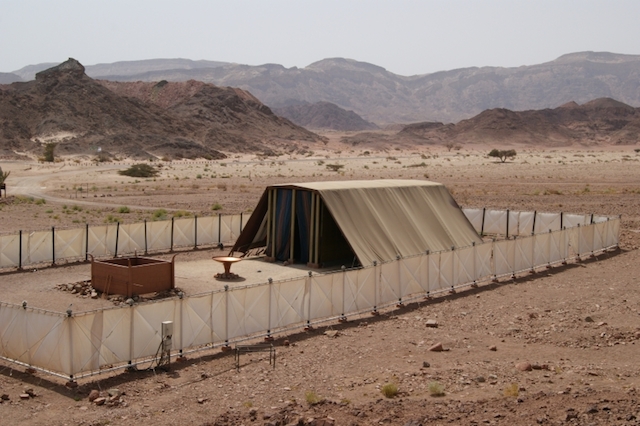Browsing:
It of Exodus adopts elaborate detail to explain the construction and designs from the tabernacle. The tabernacle was encircled with a rectangular fence having a gate, which enclosed an outer courtyard area. An altar for burnt choices (sacrifices) was within the courtyard. Much deeper in to the courtyard, a screen sectioned from the “Holy Place” from all of those other area. Even much deeper, a curtain produced an obstacle towards the “most holy place,” the Holy of Holies.

This innermost and many holy part of the tabernacle was designated to accommodate the ark from the covenant, where the tablets from the law could be stored. The ark was to make of acacia wood and overlaid with pure gold. The Torah provides precise measurements for building the ark: “two . 5 cubits lengthy, a cubit . 5 wide, along with a cubit . 5 high” (Exodus 25:10). Acacia rods overlaid with gold were utilised for transporting the ark with the desert. A protective cover for that ark was needed, with adornments of two gold cherubim (angels), one on every side, facing one another with outspread wings. Additional instructions include producing ritual products: a table, “bowls, ladles, jars, and jugs,” as well as an intricately designed six-branched menorah, or candelabra (Exodus 25:29-38).
READ: Mishkan in Mississippi
Exodus 26 details the making of the tabernacle, that was a tent-like structure engrossed in 10 strips of linen cloth. The material was to make of blue, crimson, and crimson yarn, using the cherubim motif in the ark cover recurring here. The written text procedes to detail the precise quantity of loops and gold clasps through which each cloth ought to be tied to another. It adds that 11 cloths of goat hair should cover the tabernacle, connected by loops and copper clasps. Further, ram skins and dolphin skins may be utilized as further covering for that tabernacle.
The Tabernacle’s Significance
The tabernacle was regarded as where God’s presence dwelled one of the Israelites, in which the divine and earthly realms met. The tabernacle’s design physically symbolized a gentle rise in gradations of holiness, in the outer courtyard (meant to produce a barrier in the profane realm) towards the Holy of Holies (only joined annually on Yom Kippur through the High Priest).
Various reviews construed the value of the tabernacle diversely. Maimonides saw the tabernacle being an picture of a royal palace.The Zohar, a mystical text thought to happen to be designed in the 13th century, saw the tabernacle like a reflection of the entire process of the development of the world. Indeed, the Zohar highlights, the word what accustomed to describe how God produced the world within the Book of Genesis is like the language accustomed to describe the artist Bezalel’s building from the tabernacle within the Book of Exodus.

The 19th-century Russian-Jewish commentator referred to as Malbim provided a symbolic reason behind the relevance from the tabernacle. It wasn’t that God needed an actual sanctuary on the planet, but that every one people is known as to construct a tabernacle for God within our hearts, preparing ourselves to become sanctuary for God.
The portability from the tabernacle foreshadows the long run movements from the Jewish individuals exile, where they built synagogues and houses of study wherever they migrated. The tabernacle also stands denoting the paradox of divine presence on the planet: Around the one hands, God is thought to be everywhere — or possibly, because the Malbim argues, in human hearts — but however, the tabernacle (and then the Temple in Jerusalem and synagogues around the world) represents an actual location where humans may feel an association to God.
The Tabernacle versus. the Temple
The Holy Temple in Jerusalem, first built-in 957 BCE by King Solomon, grew to become the permanent sanctuary for that Israelites to worship God (until it had been destroyed and then reconstructed and destroyed again). The tabernacle was the portable sanctuary they used while wandering within the desert.
Archaeological Evidence of the Tabernacle
In 2013, it had been reported that possible evidence have been found from the tabernacle within the ancient town of Shiloh, within the Israeli-occupied West Bank. Archaeologists discovered holes hewn into rock that might have been employed for propping in the wooden beams from the tabernacle. Previous research to begin had also found remains of possibly sacrificed creatures and proof of bathing pools in which the High Priest might have cleansed themself when preparing to go in the tabernacle.
Further Studying around the Tabernacle
The tabernacle is discussed at a number of points within my Jewish Learning’s Torah reviews around the following weekly Torah portions:
Terumah
Tetzaveh
Vayakhel
Pekudei
Shmini
B’midbar
Naso
Resourse: http://myjewishlearning.com/article/the-tabernacle/

